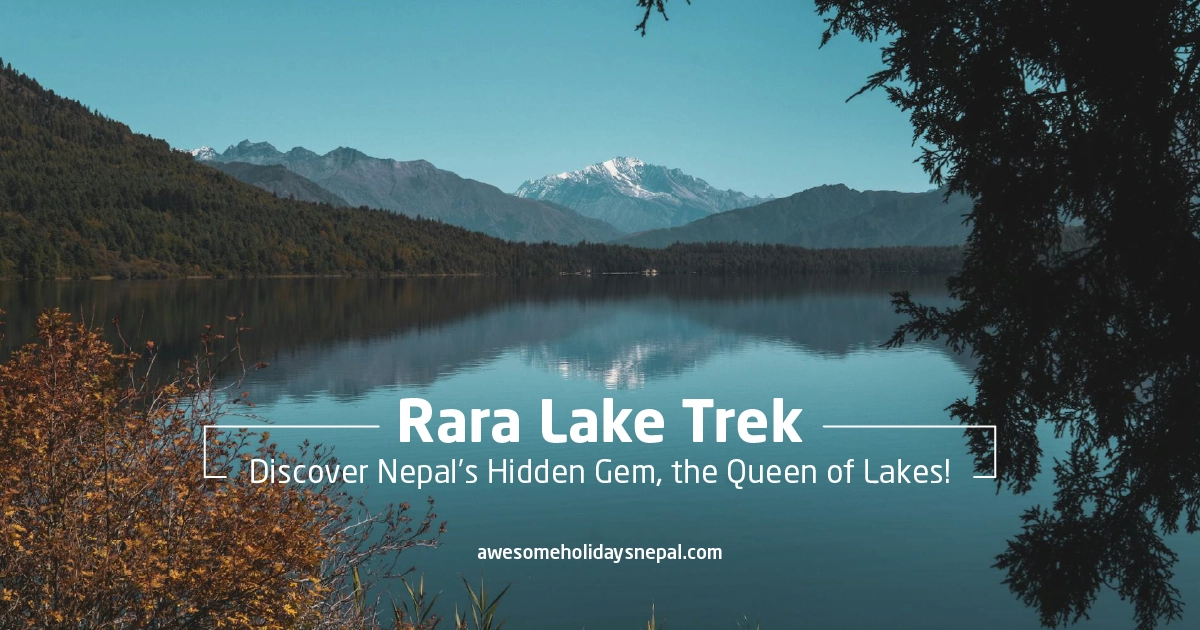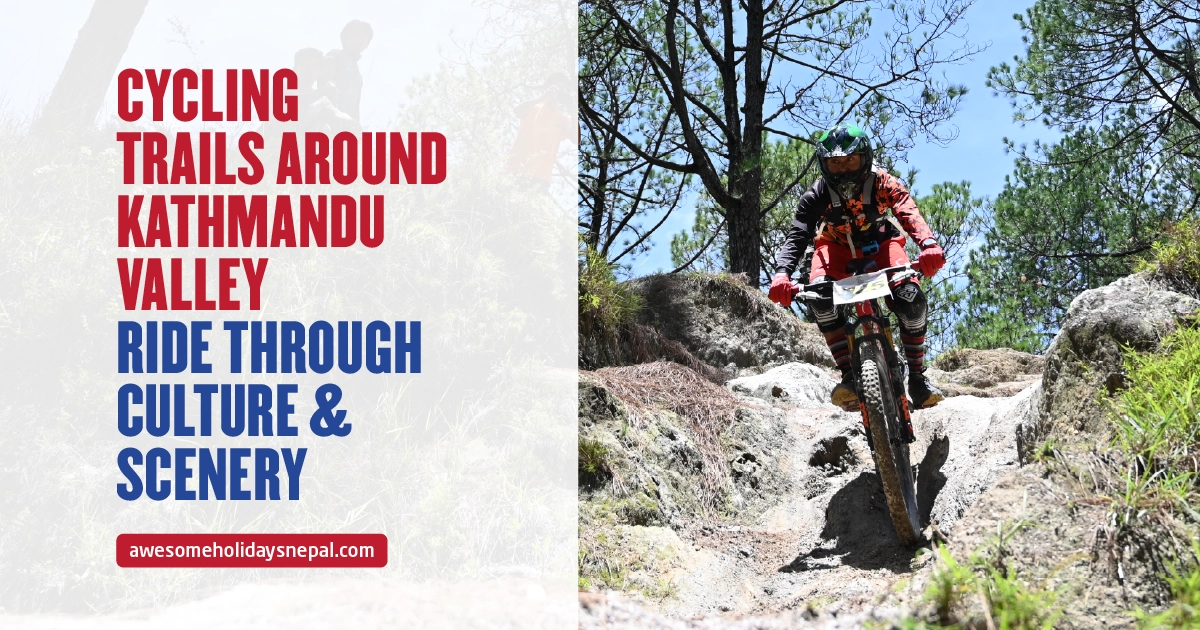Annapurna Circuit Weather: Comprehensive Details
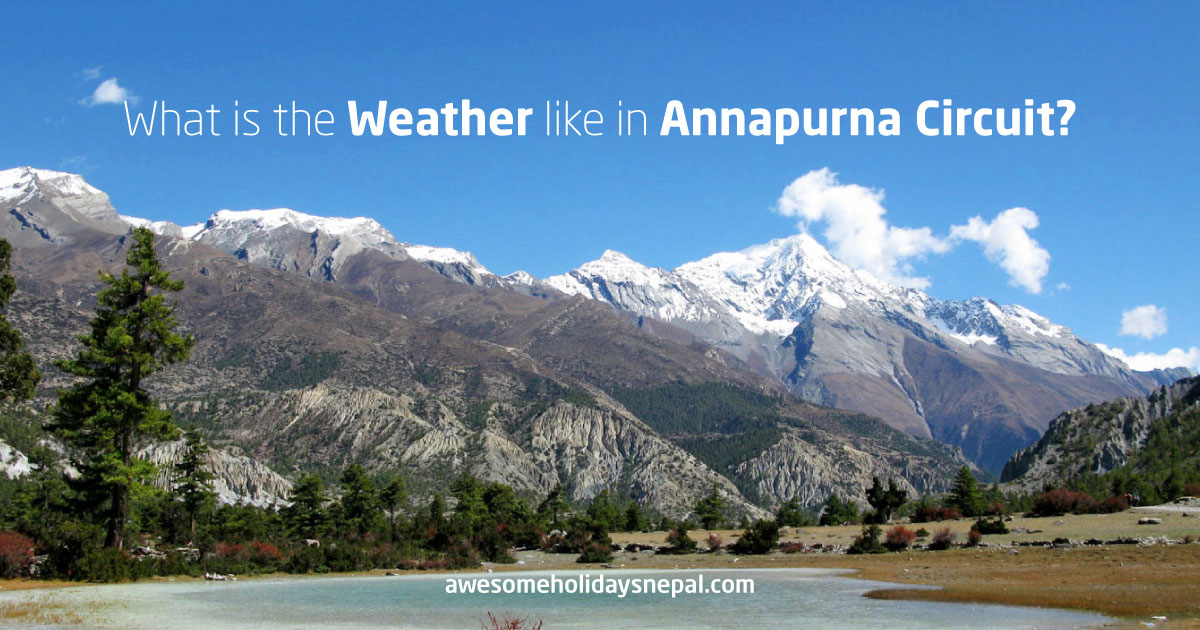
Annapurna Circuit trek is, without a doubt, the most cherished trekking route in Nepal or the entire world. From mighty excursions to the top of the peak to trekking to hills for the panoramic mountain view, this route offers many trekking and hiking alternatives.
But what the region has to offer isn’t enough information; you also need to be aware of the weather and decide on the right season for you to trek. The Annapurna Circuit weather is also mostly chilly, like most treks in Nepal’s Himalayan region.
However, there’s a catch to each of these, making every season trek a different experience for travelers. Before digging down into the Annapurna Circuit Weather details, let’s have a quick look at the Annapurna region and the circuit trek.
Annapurna Region
Nestled in the center of Nepal’s Himalayas, the Annapurna region comprises a series of mountain ranges, including the tenth-highest peak in the world, Annapurna I. Enriched with a variety of landscapes, a rich cultural diversity, panoramic views of the mountains, and conserved biodiversity, the region offers abundant opportunities for visitors.
Frankly speaking, there are multiple reasons to explore the Annapurna region. Given the diversity of landscapes along the mountain ranges, Annapurna offers a variety of trekking routes to all sorts of adventurers. One such trek is the Annapurna Circuit Trek.
Annapurna Circuit Trek
The Annapurna Circuit is the perfect trek for those looking to experience the best of Nepal’s natural beauty and cultural diversity. This 22-day-long adventure offers an unparalleled experience of the Himalayas while taking us through lush subtropical forests, diverse landscapes, and high-altitude desert plains.
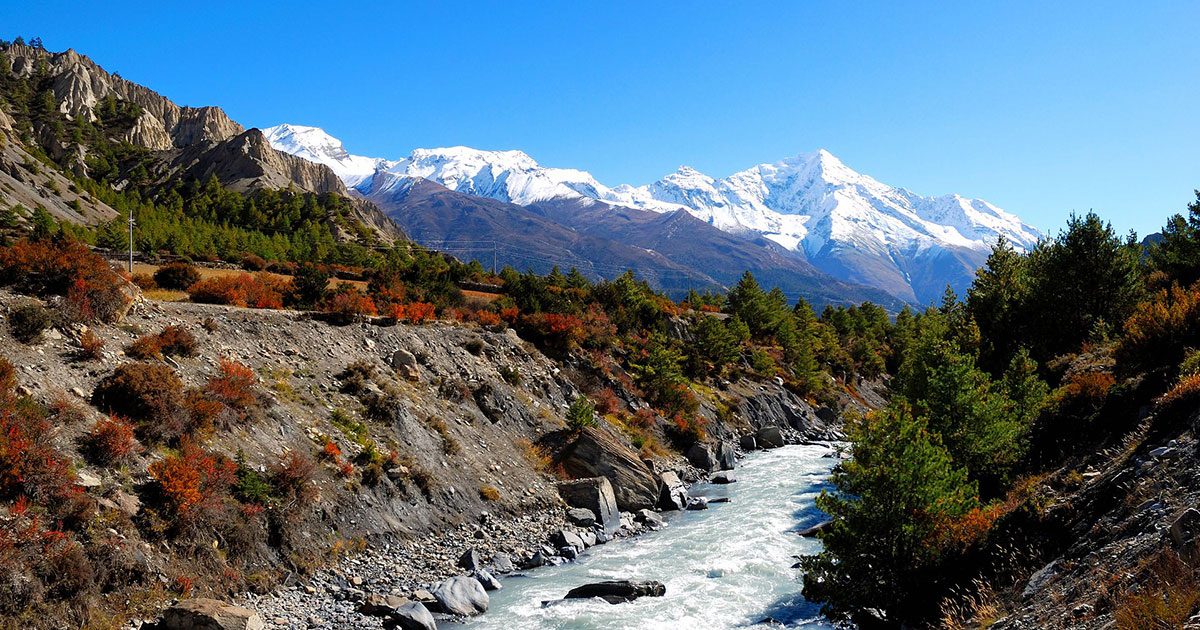
The trek circles the Annapurna Massif, crossing the Thorong La Pass at 5,416 meters (17,769 feet), and provides stunning views of some of the world’s highest peaks, including Annapurna, Dhaulagiri, and Machhapuchre. Along the way, you will pass
Annapurna Circuit Weather
The weather in the Annapurna circuit trek is quite unpredictable and varies vastly according to the seasons and elevation. As you ascend to a higher elevation, the temperature keeps dropping down, and the wind gets stronger, too. Here’s what the Annapurna circuit weather looks like throughout different seasons:
Weather in Fall Treks
Fall is one of the best seasons to trek through the Annapurna Circuit. Usually, the month between mid-September to late November is called the fall season for trekking in Nepal. As the monsoon subsides and the weather starts to clear out, you will most likely see the snow-capped mountains.
Similarly, the temperature is milder even during the day, as it can range from 15 degrees Celsius to 25 degrees Celsius. Likewise, the temperature at night is also tolerable, as the lowest can reach negative 5 degrees Celsius near the peak. Considering these multiple factors, autumn or the fall season is considered the best one for trekking through the Annapurna circuit.
And if you want to avoid the rush that’s typically observed in October, you better plan out for mid-September.
Weather in Spring Treks
There can be no better weather than trekking through the Annapurna Circuit in spring. Not only is the weather apt, the temperature tolerable, and the mountains clear, but the trekking trail also feels heavenly.
Since the winter has just worn out, the snow remains intact on the mountain peaks, and the weather is perfect. Even though it looks sunny, the temperature is just right for a trek, with an occasional chilly breeze flowing through the trekking trails.
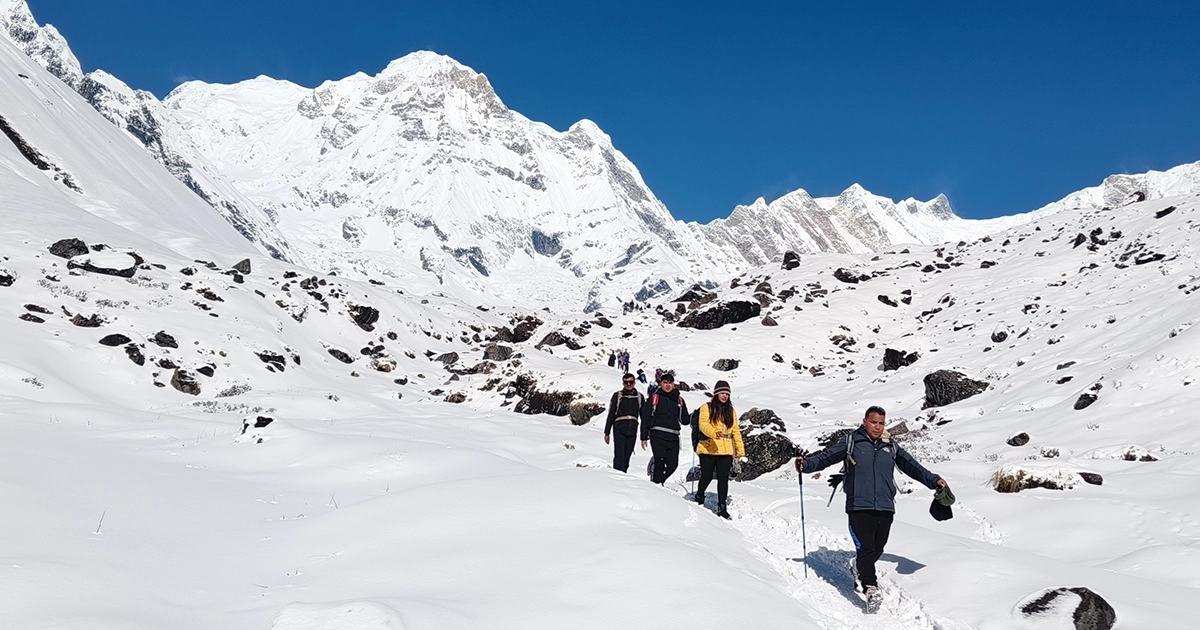
And the best part about spring treks is the beautiful rhododendron forests that you will pass across while trekking in the circuit. The Annapurna conservation area is rich in rhododendrons, and the bright red flowers over the dense green trees just look mesmerizing. Also, the biodiversity is very enriched during this season, giving you a sight of unique flora and fauna.
Weather in Winter Treks
Frankly speaking, winter treks aren’t a good idea for the Annapurna circuit. Even the lower altitudes are covered with white snow, and the temperature is extremely low, often leading to altitude sickness. You need to be a well-experienced trekker with an adaptive ability to tackle the region’s freezing temperature and limited facilities.
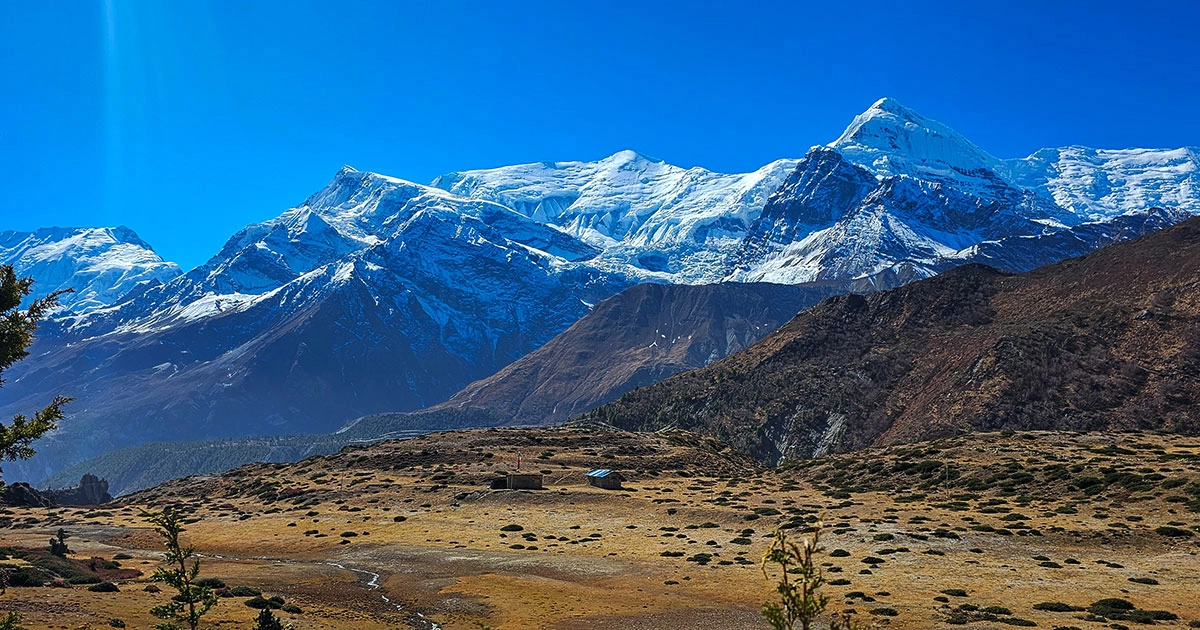
Since the cold is extreme, even the locals who usually run tea houses climb down to surpass the winter. If you are an experienced trekker and want to ascend the Annapurna circuit, then you should be well prepared to adapt to the weather.
Highlights of the Annapurna Circuit Trek
Let’s take you through the highlights of the Annapurna Circuit trek:
Luscious Rhododendron Forest
If you are trekking through the Annapurna circuit during the spring season, you will be blessed with the most beautiful sight of the region. The red rhododendrons covering the green forests and the smell of flowers will make the experience way more magical then one can imagine.
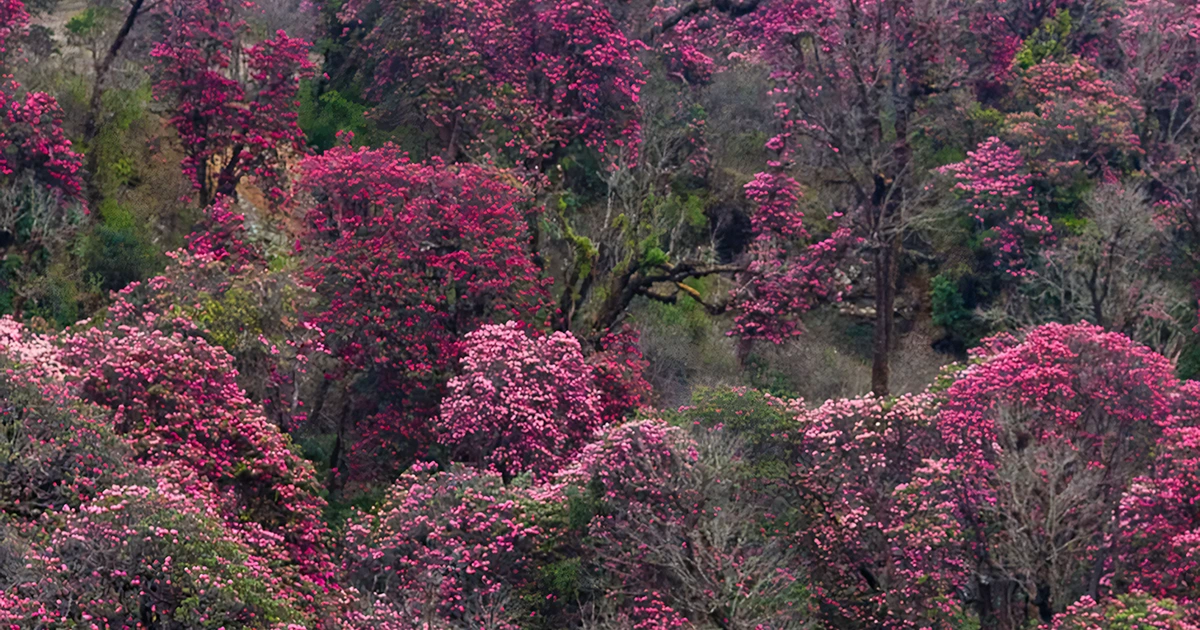
Rich Ethnic Culture
The major highlight of traveling throughout Nepal is experiencing different ethnic traditions and an immense cultural experience. While in the Annapurna circuit, a day with the Gurung community at Ghandruk is something you shouldn’t miss.
You can stay at the community homestays and enjoy their flavorful and nutritious traditional cuisine. The community people also offer you their traditional costumes; you can try them on and click a picture to carry the memories of this unique experience with you.
To learn more about the people of this community, you can also visit the Gurung Museum located in Ghandruk. It will give you a glimpse of the lifestyle of this ethnic community.
Natural Hot Water Springs
Your trek to the Annapurna region is incomplete without a dip at the natural hot springs of Jhinu Dada. Located in a charming village inside the Annapurna Conservation area, the hot springs are a great way to relax sore muscles from the trek.
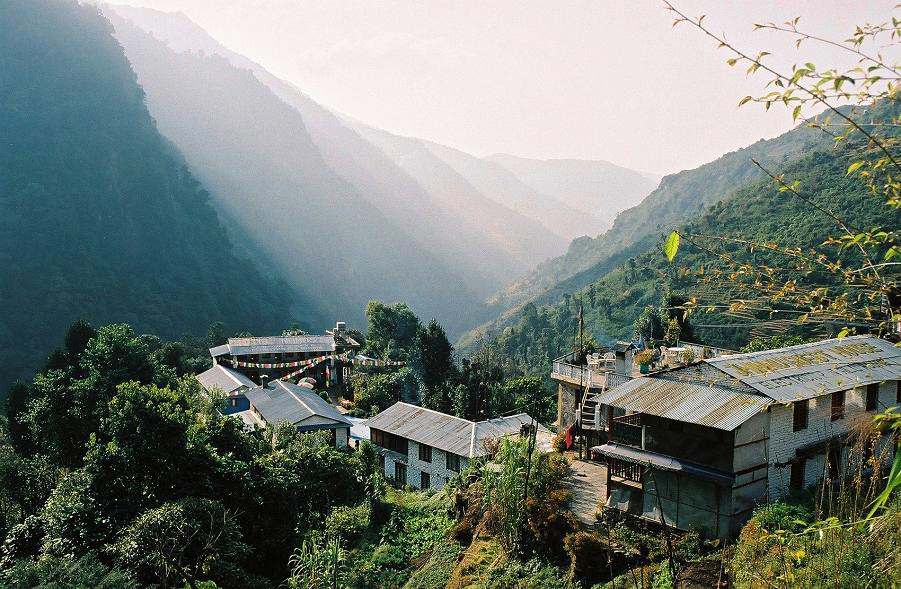
Similarly, there’s another natural hot spring in Tatopani where you can relax while trekking around the Annapurna circuit.
Tilicho Lake
If you love water bodies, a detour to Tilicho Lake is a must while trekking through the Annapurna Circuit. At 4919 meters from sea level, it is among the highest Himalayan lakes. In fact, it was considered the highest lake in Nepal until the discovery of Kajin Sara Lake.
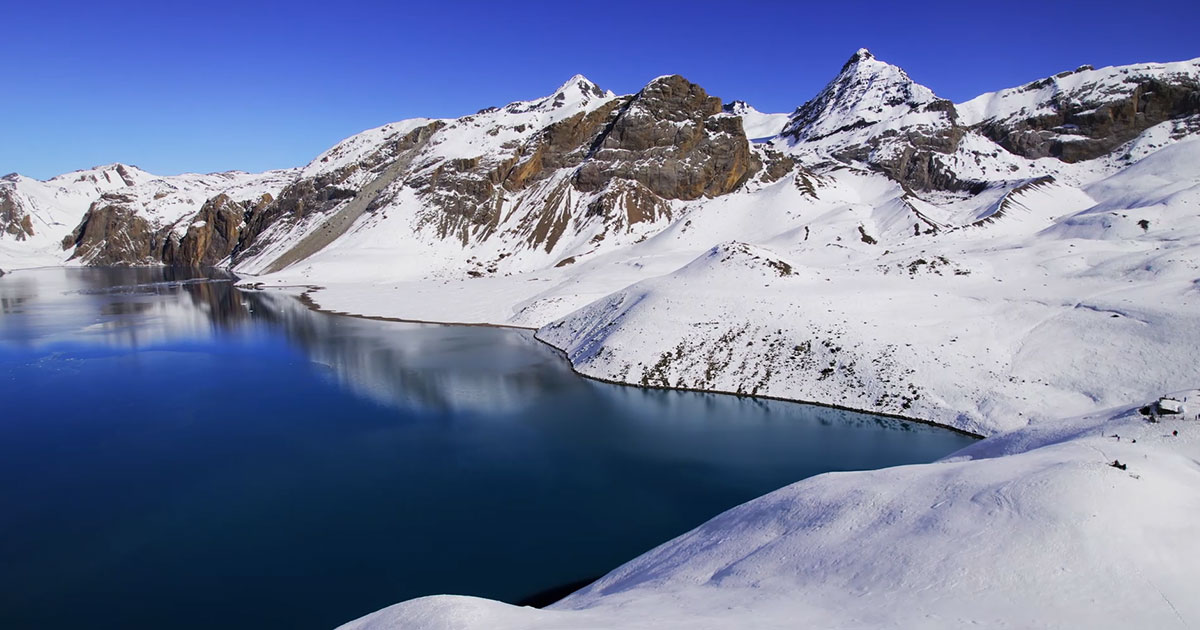
Blue waters from the melting Himalayas with the Annapurna range, the Nilgiri mountain, and other peaks towering over make the lake pristine. Despite being a challenging trek, the view is worth it. Some tourists often prefer to ride their mountain bikes to the lake from Jomsom.
High Mountain Passes
While on the Annapurna circuit trek, you will encounter the Thorong La pass, a high mountain pass located at an elevation of 5416 meters (17769 feet) above sea level. It is a challenging mountain pass that offers a panoramic view of the Annapurna and Dhaulagiri ranges.
Rich Biodiversity of Annapurna Conservation Area
The Annapurna conservation area is the largest conservation area dedicated to protecting Nepal’s biodiversity. It encompasses the Annapurna Himalayan region and most of the Kali Gandaki River valley, the world’s deepest valley.
Since the area is a habitat to 105 mammals, 518 birds, and many other animals, including rare endangered species like the snow leopard, you are most likely to cross paths with one. Many bird lovers often visit the area to watch the six types of Himalayan pheasants and other birds.

If you are trekking through the Annapurna circuit, you will have the chance to experience this rich natural diversity.
Best Time for Annapurna Circuit Trek
Fall and Spring are the best seasons to trek to the Annapurna circuit trek. Since the climate is suitable, the trails are dry, and the skies are clear during these two seasons, it is also the best season for climbing the Himalayan regions of Nepal. Usually, during September-November and April-May, most visitors ascend through different trekking routes of the Annapurna region.
However, the trek is possible all around the year. As long as you can avoid rainstorms and sustain extreme temperatures, you can ascend during colder months to avoid the crowd.
Other Common Annapurna Region Treks
Apart from the Annapurna circuit trek, there are many other trekking destinations and routes that you can enjoy. Since it’s the most popular route, it’s most likely to be the most crowded one, too, during the peak trekking and climbing seasons. Here are some alternative treks in the Annapurna region:
Annapurna Base Camp Trek
The Annapurna Base Camp (ABC) trek is one of the classic Himalayan treks that takes you closer to experiencing the divinity of nature. This 14-day adventure in the Annapurna region offers you an immersive experience in the heart of the Himalayas.

Not only is the pleasure of walking through rhododendron forests while looking up to the snow-capped mountain ranges incomparable, but the experience of the ethnic Gurung community while staying in Ghandruk village is also incomparable.
Giving you a whole lot of experiences, this trek finally culminates at the Annapurna Base Camp, where towering peaks surround you, including Annapurna I and Annapurna South.
Ghorepani-Poon Hill Trek
The Ghorepani Poon Hill Trek is a 5-day adventure that begins with a short drive from Pokhara to Nayapul and offers a unique cultural experience along with panoramic views of peaks in the Annapurna region.
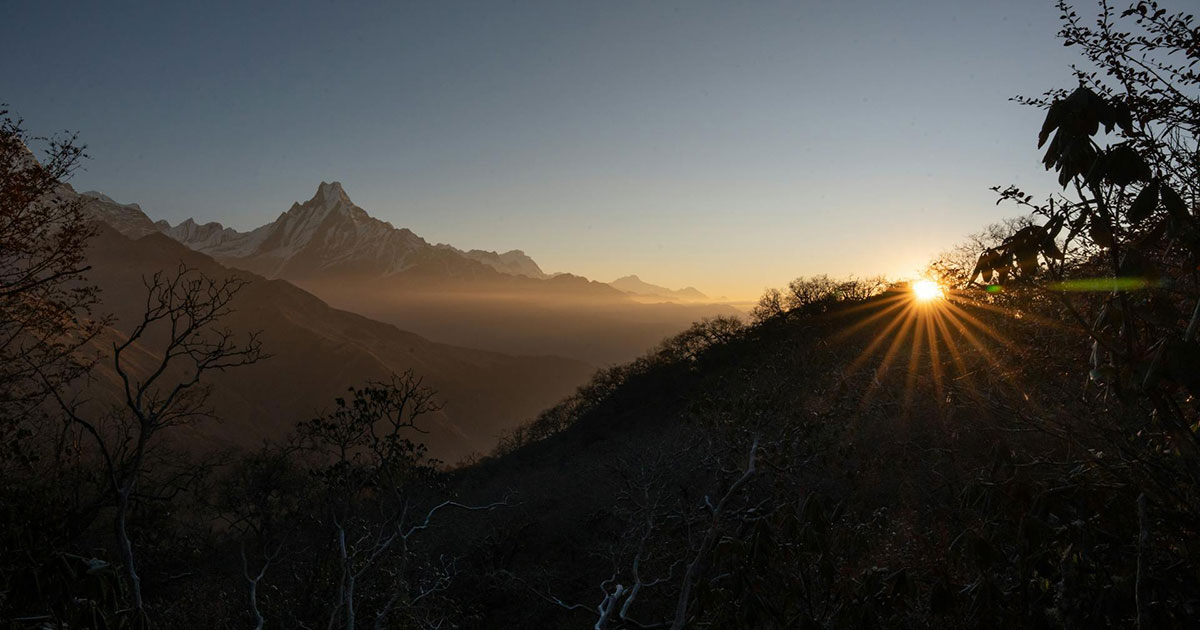
This trek takes you through the pleasant ambiance of rural villages, luscious green forests, and ethnic homestays before ascending to the base camp of the Annapurna range. It also perfectly blends natural beauty, cultural richness, and adventure, making it one of Nepal’s most popular trekking routes.
Mardi Himal Trek
Want to enjoy the luscious rhododendron forests with a backdrop of the Annapurna Mountain range? If so, explore the hidden gem of the Annapurna region with a trek to Mardi Himal.
The Mardi Himal Trek is a hidden gem that offers a peaceful and rewarding adventure through some of Nepal’s most stunning landscapes. Our trek lasts 11 days, which is relatively short compared to other treks in this region.
On our journey, we travel through lush rhododendron and oak forests across alpine meadows. It is perfect for someone looking for a refreshing contrast to the hectic and busier scenario. You get to experience unforgettable moments surrounded by the grandeur of the Himalayas in serene solitude.
Want to plan a Mardi Himal Trek? Here’s what your itinerary will look like:
Be Informed and Stay Safe
Safety is a prime concern whenever you go on an adventurous exploration, such as trekking through the Himalayas, like the Annapurna Circuit trek. To ensure that, it’s necessary to know about the weather in this area.
Depending on your health and fitness level, you must choose the right weather for trekking through the Annapurna circuit. Since you have learnt about the different seasons and their weather, opt for your best take.
Enjoy your adventure!
FAQs
Expand AllWhich season is best for the Annapurna Circuit trek?
The spring season is best for the Annapurna Circuit trek as the weather is sound and the mountain views are best under the clear sky. You can also experience the beauty of rhododendron forests during the spring trek of the Annapurna circuit.
Can a beginner do the Annapurna Circuit Trek?
Yes, a beginner can do the Annapurna circuit trek but it might be a little challenging. You need to prepare well and be physically fit to trek for 6 to 7 hours a day in colder regions and with less oxygen.
What level of fitness is needed for the Annapurna Circuit Trek?
To trek to the Annapurna Circuit, you will require a moderate fitness level since you will walk at least 6-7 hours a day. You will also require good cardiovascular endurance and muscular strength to ascend quickly through rough terrain.
If you aren’t somebody who doesn’t perform physical training regularly, it is better to start training at least ¾ months in advance. Ensure you include cardio, flexibility exercises, and strength training in your workout to prepare your body for the trek.
How difficult is the Annapurna Circuit trek?
The trek to Annapurna Circuit takes you to an elevation above 3000 meters where the temperature is low, oxygen is scarce, and the terrain is rough and risky. Thus, you can say it’s difficult to trek through the Annapurna circuit. You must be physically fit and mentally composed to complete the trek successfully.
Is Annapurna Circuit trek harder than Manaslu Circuit trek?
No, Annapurna Circuit isn’t harder than the Manaslu Circuit, despite being higher in elevation. The reason behind this is the well-developed trekking trails and good food and accommodation services compared to the Manaslu region.
What is the weather like on the Annapurna Circuit trek?
If you are trekking to the mountainous region above an elevation of 5000 meters, such as the Annapurna Base Camp, the weather can be quite unpredictable. Usually, the temperature is lower and can drop to freezing at night.
Besides, the higher elevation areas often have snow storms, soft rains, and chilled breezes.
What permits are required for Annapurna Circuit Trek?
To trek through the Annapurna Circuit, you will require two passes: the Annapurna Conservation Area Permit and the TIMS card. You might need an additional restricted area permit to trek to the upper Mustang area. These passes can be obtained easily from the Tourism Board of Nepal.
Related blog posts
Discover a choice of tourist destinations loved by most of our visitors. Whether you're on a jungle safari to spot rare animals or walking through a world heritage site, these well-planned itineraries cover the major highlights of Nepal.


